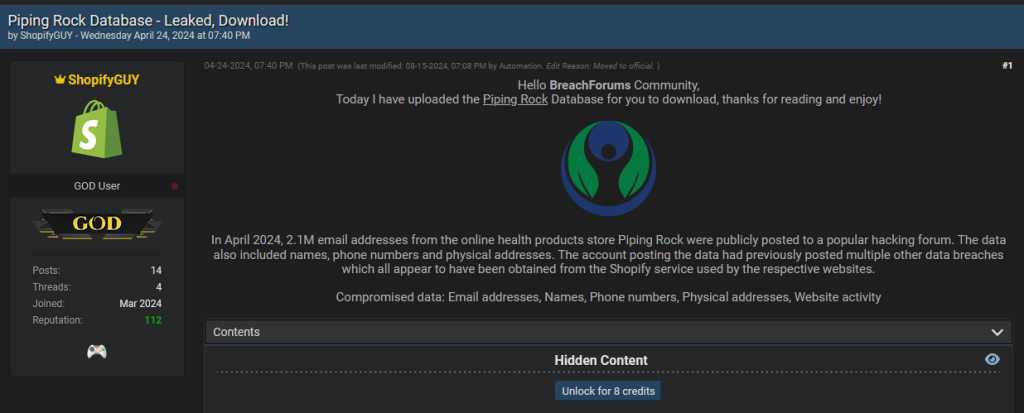Small business owners, secure your web shop
Web shops are an attractive target. How can SMBs keep theirs safe?

An online shop is more than just another way to sell your products. It comes with a responsibility to keep the web shop secure.
Cybercriminals are looking to steal your customers’ credit card details, their personal data, and even your revenue.
And it’s not as if using a platform that is used by major retailers makes it safe. Platforms like Shopify, Wix, and Magento are always under scrutiny of cybercriminals that are looking for a vulnerability that allows them to insert skimmers or get access to your database.
Let’s look at some examples to demonstrate my point.
A cybercriminal specializing in breaching Shopify stores is posting huge data sets as free downloads. Using the monicker ShopifyGUY, which implies they specialize in Shopify sites, the cybercriminal posted a few datasets containing millions of customer records.

For example, boAt is reportedly Indian’s most active company that markets audio-focused electronic gadgets. ShopifyGUY dumped files of a data breach with access to PII information of boAt customers, which has 7,550,000 entries.

ShopifyGUY also uploaded the Piping Rock database containing 2.1million email addresses from the online health products store Piping Rock.
We found several Magento-based web shops that had skimmers injected into their code busy stealing credit card information. One of them even infected visitors with the SocGolish malware, a sophisticated JavaScript malware framework that has been actively used by cybercriminals since at least 2017. It tricks users into running a script supposedly meant to update their browser. What it actually does is infect the machine and send the details back to a human operator, who can decide how best to monetize it. Lately, SocGholish has been found to install information stealers on both Windows and Mac machines.
How to secure your web shop
The most common attacks web shop owners need to worry about are:
- Credential phishing where the criminals try to steal your login credentials.
- Malware injection where the criminals inject malicious code into your web shop by abusing a vulnerability in the platform itself or a plug-in.
- Brute force attacks, where the criminals try a whole bunch of passwords they obtained from other breaches.
So, to keep your web shop safe you should:
- Be extra vigilant when it comes to phishing attempts.
- Keep your software up to date.
- Protect the device(s) you use to login with an active anti-malware solution.
- Make it harder to log in by using multi-factor authentication (MFA) and by not re-using passwords.
- Regularly check your web site for additional code, especially the payment section.
- If you run the web shop on your own server, use web application firewalls (WAF) to detect and block malicious traffic.
- Do not store customer details that you no longer need.
Your customers will probably not thank you for your efforts, but they will come complaining if you spill their data.
For readers that would like to check whether their credentials are included in one of the data breaches, Malwarebytes has a free tool for you to check how much of your personal data has been exposed online. Submit your email address (it’s best to give the one you most frequently use) to our free Digital Footprint scan and we’ll give you a report and recommendations.

















_Agata_Gładykowska_Alamy.jpg?#)























































